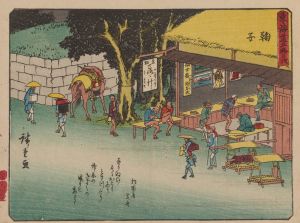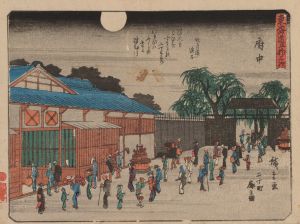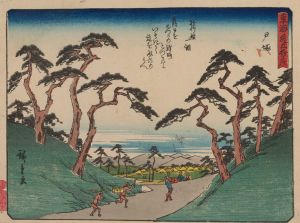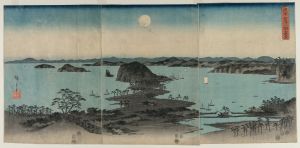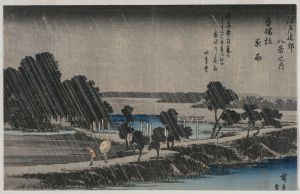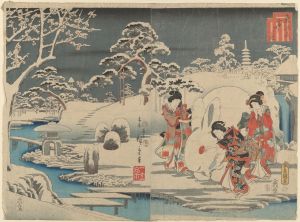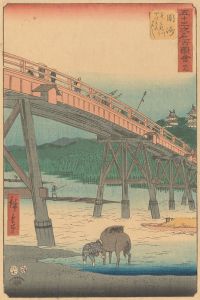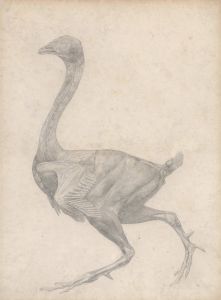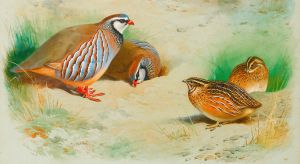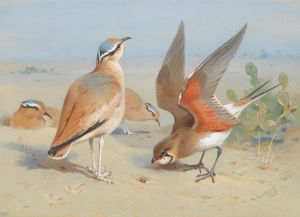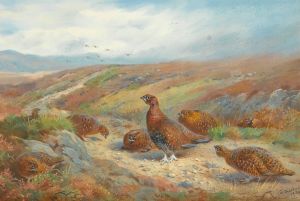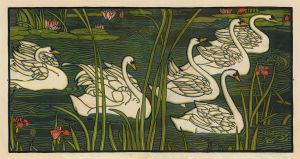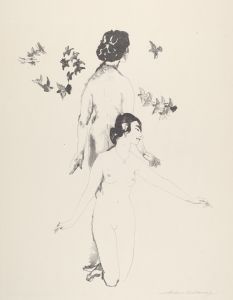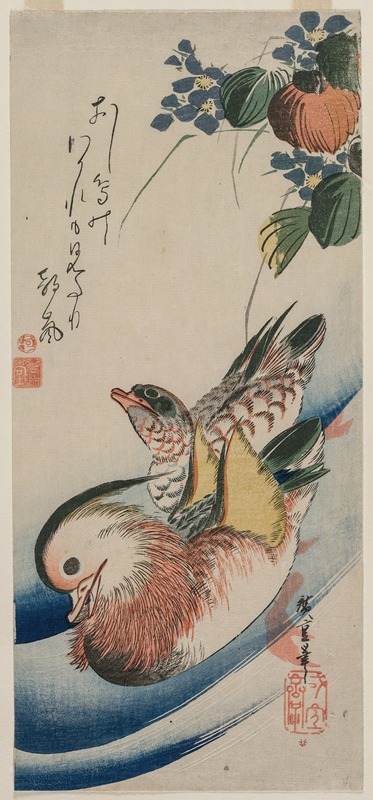
Mandarin Ducks and Flowering Plants
A hand-painted replica of Andō Hiroshige’s masterpiece Mandarin Ducks and Flowering Plants, meticulously crafted by professional artists to capture the true essence of the original. Each piece is created with museum-quality canvas and rare mineral pigments, carefully painted by experienced artists with delicate brushstrokes and rich, layered colors to perfectly recreate the texture of the original artwork. Unlike machine-printed reproductions, this hand-painted version brings the painting to life, infused with the artist’s emotions and skill in every stroke. Whether for personal collection or home decoration, it instantly elevates the artistic atmosphere of any space.
Andō Hiroshige, a renowned Japanese ukiyo-e artist of the Edo period, is celebrated for his landscape prints and depictions of nature. One of his notable works is "Mandarin Ducks and Flowering Plants," which exemplifies his skill in capturing the beauty of the natural world. This artwork is part of Hiroshige's broader oeuvre that often features birds and flowers, a genre known as kachō-ga.
"Mandarin Ducks and Flowering Plants" showcases Hiroshige's ability to blend realism with artistic expression, a hallmark of his style. The composition typically includes a pair of mandarin ducks, which are often associated with love and fidelity in East Asian culture, symbolizing marital bliss and harmony. These birds are depicted in a serene setting, surrounded by various flowering plants. The choice of flora in the painting is significant, as it reflects the seasonal changes and the harmonious coexistence of different elements in nature.
Hiroshige's use of color and line work in this piece is particularly noteworthy. He employs a delicate palette that captures the subtle hues of the ducks' plumage and the vibrant colors of the flowers. The lines are fluid and graceful, conveying a sense of movement and life. This attention to detail and the harmonious composition are characteristic of Hiroshige's approach to kachō-ga, where the focus is on creating an aesthetically pleasing and balanced image.
The technique used in "Mandarin Ducks and Flowering Plants" is woodblock printing, a traditional Japanese method that involves carving an image into a wooden block, applying ink, and pressing it onto paper. This technique allows for the production of multiple copies of the same image, making art more accessible to the public during the Edo period. Hiroshige was a master of this technique, and his prints were widely popular both in Japan and later in the West, influencing many Western artists, including the Impressionists.
Hiroshige's work, including "Mandarin Ducks and Flowering Plants," is often appreciated for its ability to evoke a sense of tranquility and appreciation for nature. His prints capture fleeting moments and the ephemeral beauty of the natural world, resonating with the Japanese aesthetic principle of mono no aware, which emphasizes the transient nature of life.
The cultural significance of mandarin ducks in the artwork also adds a layer of meaning. In Japanese and Chinese cultures, these birds are often depicted in art and literature as symbols of love and fidelity. Their presence in Hiroshige's work not only enhances the visual appeal but also imbues the piece with cultural and symbolic depth.
Overall, "Mandarin Ducks and Flowering Plants" is a testament to Andō Hiroshige's artistic prowess and his ability to convey the beauty and harmony of nature through his prints. His work continues to be celebrated for its artistic merit and its contribution to the cultural heritage of Japan.





